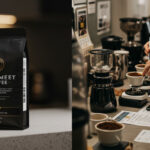
How to Brew the Perfect Cup of Coffee at Home: A Guide for Beginners

Table of Contents
ToggleFor many people, coffee is more than a beverage—it’s a morning ritual, a moment of peace, and sometimes even a creative boost. Yet, making great coffee at home can feel overwhelming for beginners. Between the various beans, brewing methods, and equipment options, it’s easy to get lost.
But here’s the truth: brewing the perfect cup of coffee at home is totally achievable, even without fancy gadgets or barista-level experience. All it takes is a little guidance, attention to detail, and a love for the process.
In this beginner’s guide, you’ll learn how to choose the right coffee, understand brewing methods, and create a cup that rivals your favorite café.
Why Brewing at Home Matters
There’s something deeply satisfying about brewing your own coffee. It puts you in control of taste, aroma, strength, and even the ritual itself. Making coffee at home can help you:
- Save money
- Reduce waste from takeaway cups
- Explore new flavors and origins
- Slow down and enjoy the moment
Plus, it’s a creative act. Like cooking, brewing coffee is about experimenting, fine-tuning, and expressing your personal taste.
“Brewing coffee at home is a daily opportunity to make something ordinary feel sacred.” – James Hoffmann, coffee expert and author
Step 1: Choosing Your Coffee Beans
The first step to a great cup is using quality beans. There are two main types of coffee beans:
- Arabica: Smooth, sweet, often with fruity or floral notes. Ideal for beginners and specialty coffee fans.
- Robusta: Stronger, more bitter, with higher caffeine. Common in instant coffee and espresso blends.
For beginners, start with 100% Arabica beans from a trusted roaster or specialty store.
What to Look For:
- Roast Date: Fresh is best. Try to use beans within 2–4 weeks of roasting.
- Roast Level:
- Light roast: Bright, acidic, and aromatic
- Medium roast: Balanced and smooth
- Dark roast: Bold, with deep, smoky flavors
- Origin: Beans from different regions offer unique flavor profiles. For example:
- Ethiopia: Fruity and floral
- Colombia: Nutty and sweet
- Brazil: Chocolatey and full-bodied
Step 2: Grinding Your Coffee
The grind size affects the flavor and extraction. Pre-ground coffee can work in a pinch, but fresh grinding makes a huge difference in taste and aroma.
Here’s a basic guide:
| Brewing Method | Ideal Grind Size |
|---|---|
| French Press | Coarse |
| Pour Over (V60) | Medium-Fine |
| Drip Coffee Maker | Medium |
| Espresso Machine | Fine |
| Turkish Coffee | Extra Fine (powder) |
Invest in a burr grinder, which gives a consistent grind, unlike blade grinders that can create uneven results.
“The grind is the foundation of your coffee—it controls everything else.” – Matt Perger, coffee consultant
Step 3: Choosing a Brewing Method
You don’t need expensive machines to make good coffee. Here are 3 beginner-friendly brewing methods:
1. French Press
- Flavor: Bold, full-bodied
- What you need: French press, kettle
- Brew time: 4–5 minutes
How to brew:
- Add coarse ground coffee (1:15 coffee-to-water ratio)
- Add hot water (just off the boil)
- Stir and steep for 4 minutes
- Press the plunger slowly and serve
2. Pour Over (V60 or Chemex)
- Flavor: Clean, bright, aromatic
- What you need: Pour-over cone, filter, kettle
- Brew time: 3–4 minutes
How to brew:
- Rinse the filter
- Add medium-fine coffee
- Pour hot water in circular motion
- Let it drip, enjoy the clarity
3. Drip Coffee Maker
- Flavor: Smooth, consistent
- What you need: Basic drip machine
- Brew time: 5 minutes
How to brew:
- Add medium-ground coffee to filter
- Fill reservoir with fresh water
- Start machine and wait for the magic
Step 4: Water Quality and Temperature
Coffee is 98% water, so it’s crucial to use clean, filtered water if possible.
- Ideal temperature: 90–96°C (194–205°F). Just off boiling point.
- Avoid: Reboiled water or water with high chlorine or mineral content.
A gooseneck kettle gives more control during pour-over brewing, but any kettle works for starters.
Step 5: The Coffee-to-Water Ratio
Getting the ratio right ensures balanced flavor—not too weak, not too bitter.
The standard is:
- 1 gram of coffee per 15–18 grams of water
Or - 2 tablespoons of ground coffee per 6 oz (180 ml) of water
Use a kitchen scale for best results. It might sound fancy, but it’s a game-changer.
Step 6: Practice, Taste, Adjust
No one gets it perfect the first time. Brewing coffee is about testing, tasting, and tweaking.
Ask yourself:
- Is it too bitter? → Try a coarser grind or less coffee
- Is it too sour? → Try a finer grind or hotter water
- Too weak? → Increase coffee dose
Over time, you’ll begin to understand your own preferences, which is what makes home brewing so special.
“A perfect cup of coffee isn’t universal—it’s personal.” – Sara Moreno, home coffee enthusiast
Bonus Tips for an Amazing Coffee Experience
- Warm your cup before pouring to keep your coffee hotter longer
- Stir before sipping to mix the layers of flavor
- Store beans in an airtight container, away from light and moisture
- Avoid the fridge: Coffee absorbs odors easily
- Create a coffee corner in your kitchen to make your routine more enjoyable
Troubleshooting Common Mistakes
| Problem | Possible Cause | Fix |
|---|---|---|
| Bitter taste | Over-extraction or too fine grind | Use coarser grind or brew shorter |
| Weak flavor | Too little coffee or too coarse grind | Use more coffee or finer grind |
| Sour taste | Under-extraction | Brew longer or increase water temperature |
| No flavor | Old beans or poor water quality | Use fresher beans and filtered water |
Building Your Daily Ritual
The beauty of brewing coffee at home isn’t just in the cup—it’s in the ritual. Whether it’s part of your sunrise, your afternoon break, or a quiet moment in the evening, coffee becomes a pause—a small act of care.
As you grow more confident, you might explore latte art, espresso machines, or cold brews. But even with just a French press and good beans, you can craft something beautiful and satisfying every day.
You’ve Got This, Barista!
You don’t need a café or a certification to make great coffee. With some attention to the details—beans, grind, water, ratio—you can unlock a world of flavor and mindfulness in your own kitchen.
So tomorrow morning, skip the rush. Brew your coffee slowly. Sip it with intention. Let it be your time.
Because sometimes, the perfect cup is not about the caffeine—it’s about how it makes you feel.
is a writer and editor at Coffee With Finance, blending her love for coffee, personal finance, and visual storytelling. She crafts engaging articles, curates site images, and shares brewing tips, bean origins, and practical money advice. Anna believes that managing finances, like making great coffee, should be intentional and rewarding — bringing clarity, warmth, and beauty to every story she tells.

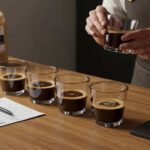
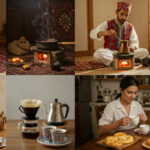










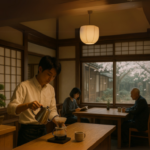




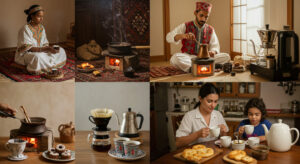








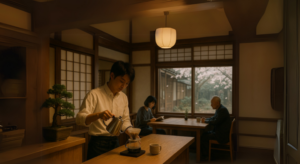
Post Comment